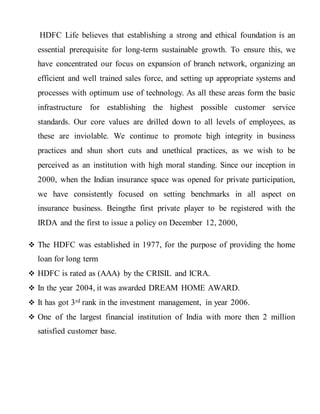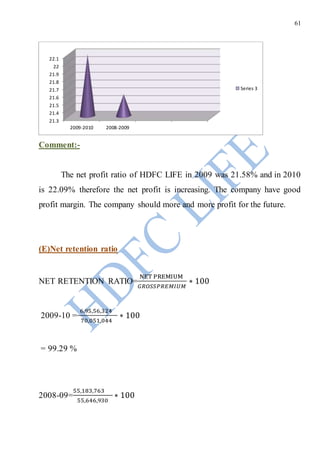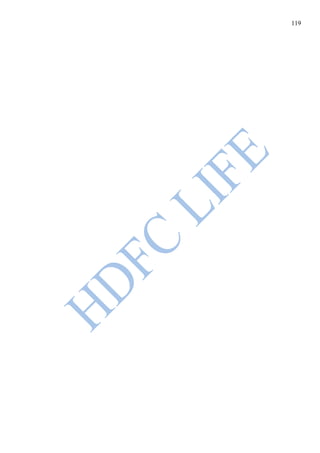This document provides descriptive information about HDFC Life Insurance Company. It discusses HDFC Life's plans, values, and vision statement. It also provides background on the life insurance sector in India, noting its high growth potential given India's large insurable population and savings rate. The life insurance market in India is the fifth largest globally and is growing rapidly, though penetration remains low at 2.3%. The government is considering increasing the foreign direct investment limit in the insurance sector from 26% to 49% to further stimulate growth.
























































































































